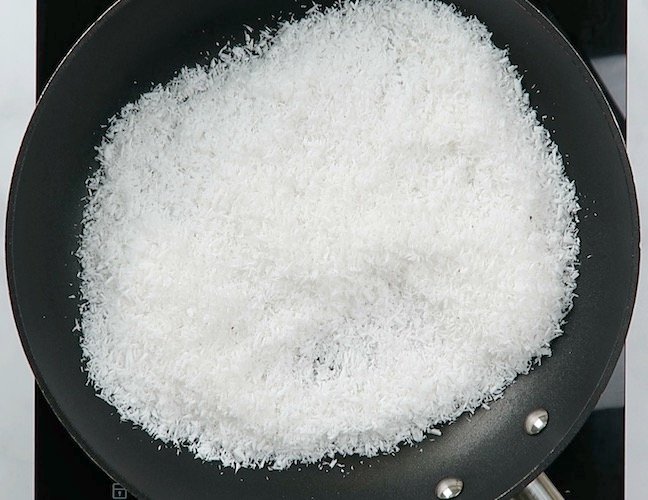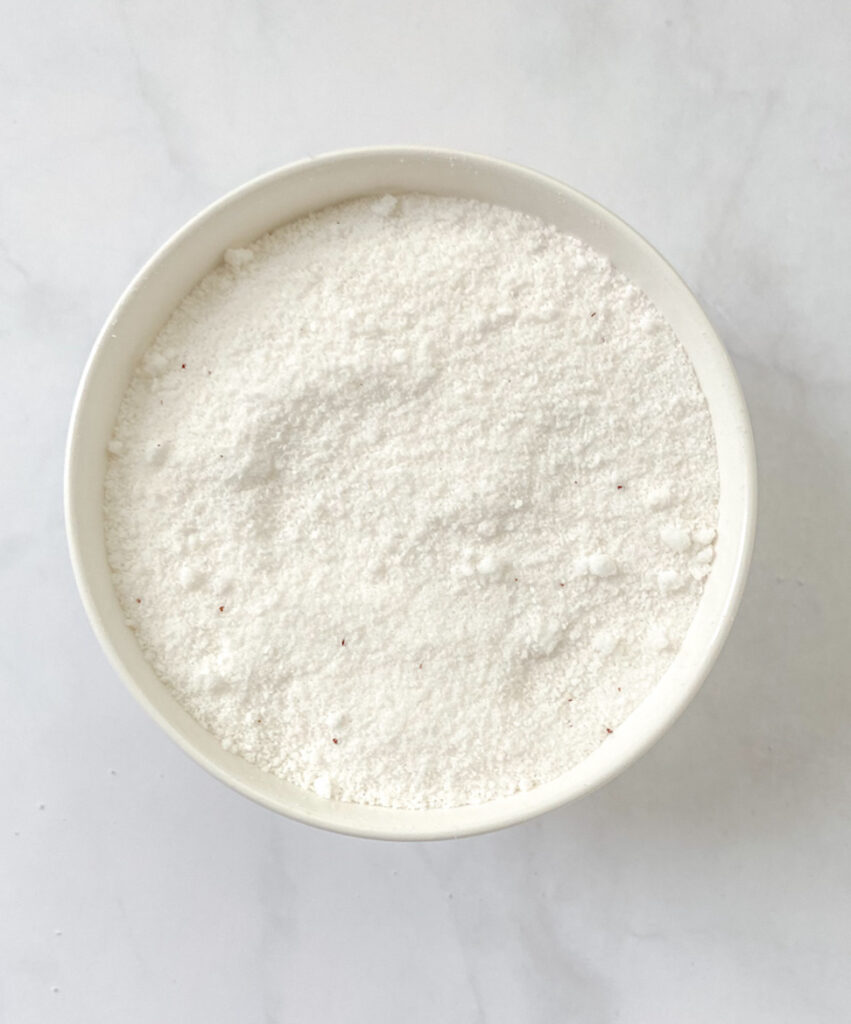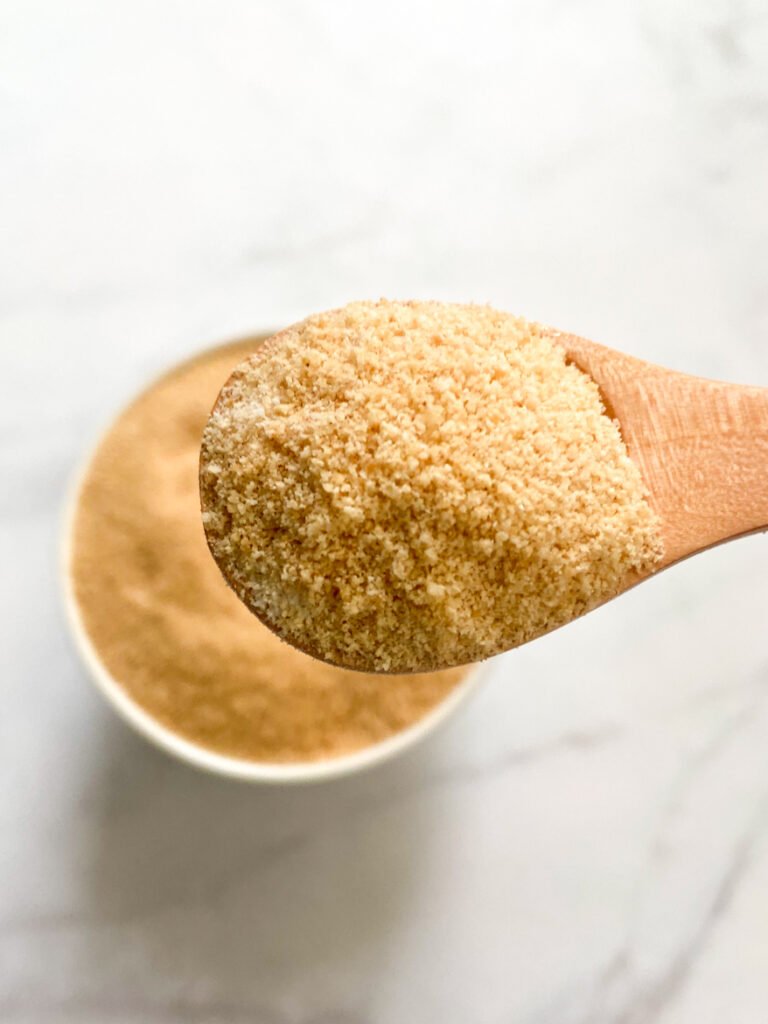If you want to know how to make homemade coconut flour, you have come to the right place! It is a simple recipe, very accessible and cheap. You only need one leftover ingredient from another recipe – coconut milk, so you will not have to throw anything away.

Are you looking for low-carb, grain-free, and gluten-free flour? Coconut flour is a great option and easy to make. It is a healthy flour to use in baking. It is rich in fiber and protein, without chemicals added as store-bought flour.
Table of Contents
INGREDIENTS TO MAKE THE COCONUT FLOUR
The only ingredient that this recipe requires is coconut pulp, which is a leftover from homemade coconut milk. I do not like to waste food, so I’m always looking for new recipes to use the leftovers.
HOW TO MAKE COCONUT FLOUR – STEP BY STEP
Firstly we need to extract the milk from the coconut. What’s left of the milk are the fibers, and the fibers will become the flour after the milk has been strained. Simply follow my Coconut Milk recipe first, and then come back to this recipe once you have the leftover pulp.
After drying the pulp, you will obtain your homemade coconut flour. To make the flour from the pulp, I suggest peeling the thin outer skin off the coconut before making the milk. This way, you will obtain pure white flour.
There are two methods that I make the flour: the oven method and the skillet method.
Oven Method:
- Preheat the oven to 120ºC/250ºF.
- Put the pulp on a baking sheet (photo 1) and bake for 30-60 minutes (photo 2). Stir every 15 minutes (photo 3).
- Remove from the oven and let it cool for a few minutes (photo 4).
- Then blend in a blender or food processor until you get a fine powder.




Skillet Method:
- Place the pulp in a large skillet and keep it over medium-low heat. Keep an eye on the heat and take care not to burn it.
- To obtain a very dry and slightly golden color flour, keep on the heat for about 15 minutes, stirring constantly with a spatula. Do not let it get too dark, as it can become bitter if you burn it, if in doubt try a little and feel the flavor.
- To check if the flour has dried, take a little of the flour with your fingertips and feel it.
- Remove from skillet and let cool for a few minutes. Then blend in a blender or food processor until you get a fine powder.




TIPS
- If you make a large batch of coconut milk and have a lot of coconut pulp, you may need to use two baking sheets instead of one. You can also freeze half of this pulp, and when you need to make the flour, just defrost it and proceed with the recipe.
- Depending on how much pulp you use. For a big batch of pulp, you may need to cook longer (up to 2 hours) or until it is fully dried.
- Although coconut is rich in fat, most of the fat remains in the water when we make coconut milk, so coconut pulp is basically fiber, which satiates our appetite and keeps us full for longer.




IS COCONUT FLOUR GLUTEN-FREE
Yes! Coconut flour is gluten-free. That means is suitable for celiac and gluten intolerants. Plus, it’s also Paleo, Whole30, Keto, and Low Carb!
CAN I MAKE THE FLOUR FROM COCONUT FLAKES
Yes! The coconut pulp is an end product when you make coconut milk. To make coconut milk, you either use coconut flakes or flesh from the dry coconut fruit. The fats need to be extracted first, so make some coconut milk, then dry the pulp to make your flour.

COCONUT FLOUR STORAGE
Store in a tightly closed glass jar. If it’s dried well, it can last for weeks or even months at room temperature (avoid exposing it to direct sunlight). Keep it in the fridge to extend this period, but the ideal is to consume it as soon as possible. If you smell a sour odor when you use it, it’s probably spoiled. Give it a try before you ruin whatever recipe you’re making with it.

HOW TO USE COCONUT FLOUR IN BAKING
While you can use it like any other type of flour, there are a few things to keep in mind when cooking with coconut flour.
Coconut flour is rich in fiber and protein. For that reason, it is very different from wheat flour. When baking with it, you should only use 1/4 the amount of flour you would normally use in a recipe. In addition, this flour also absorbs a lot of liquid, so you will need to add more milk, water, or eggs than usual, as it is very dense and dry.
However, this also depends a lot on the brand of coconut flour you are using. If it is a residue of coconut milk, it absorbs less liquid than store-bought flour. When you make cake or pancakes, I recommend checking the consistency of the batter. This way, you will know if you need more or less liquid.
Whenever you see a recipe that uses coconut flour, know that the recipe is designed specifically for coconut flour and cannot be made with any other type of flour. Coconut flour cannot be substituted 1:1 in recipes that call for all-purpose flour (nor can you use all-purpose flour in a recipe that calls for coconut flour).
You can use this flour in cakes, tarts, pancakes, cookies, and bread.

Homemade Coconut Flour
Equipment
- Baking Sheet
- Spatula
- Blender
- Sieve
Ingredients
- 2 cups (150 g/5.3 oz) coconut pulp, leftover from making the coconut milk
Instructions
- Preheat the oven to 120ºC/250℉.
- Place the coconut pulp on a baking sheet and bake for 30-60 minutes or until dry. Stir every 15 minutes.
- Remove from oven and let cool for a few minutes. Then blend in a high-speed blender or food processor until it becomes a fine powder.
- Keep it in an airtight container.
